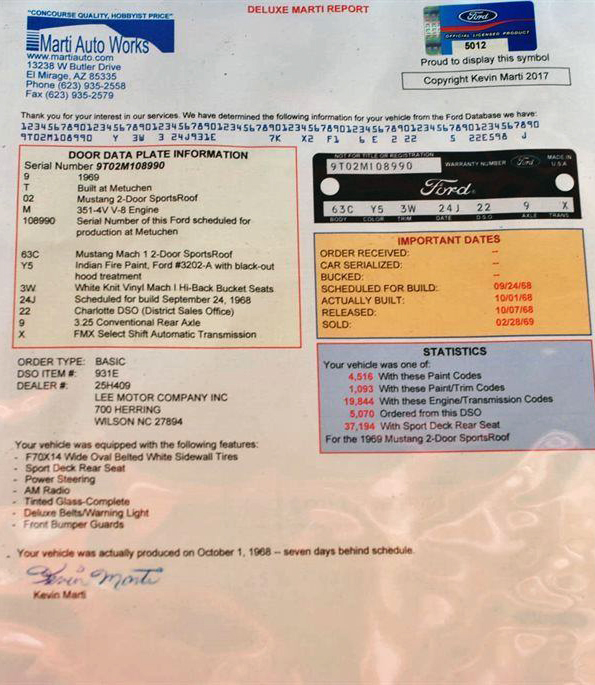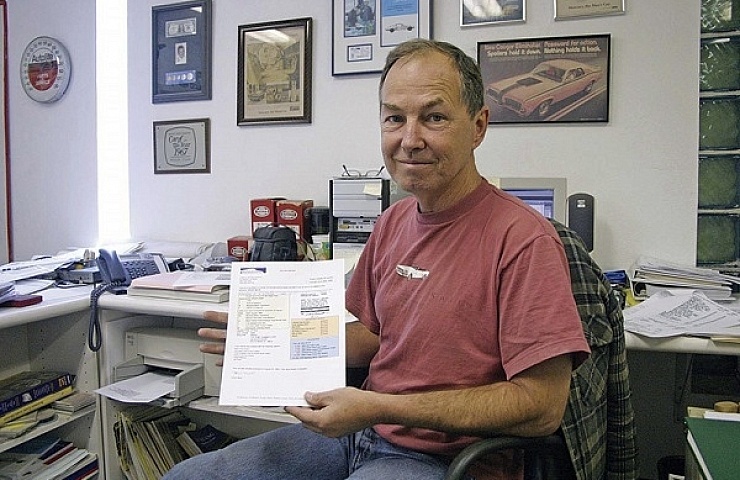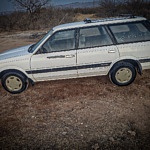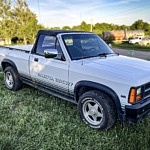The job of a carmaker is to make and sell great vehicles—not necessarily to keep exacting records for each product. In the Internet age, it’s easier for car manufacturers to maintain online databases. But the further you go back in history, the facts and figures about specific models get hazy. Fortunately for Ford fans, Kevin Marti rescued a treasure trove of paper work. These documents provide full details on all Ford, Lincoln, and Mercury vehicles built in the United States and Canada from 1967 to 2012. If you’re restoring a classic Ford, and missing the original window sticker, a Marti Report is a must.
Kevin Marti, an engineer by trade, loves restoring classic cars. He still owns a 1967 Mercury Cougar, his first car. That Cougar was the impetus for his documentation business. As a lark, he filled out a form in the back of his owner’s manual—an offer to get more historical data about the car. Lo and behold, Ford’s response was personalized and detailed. The Ford revealed that they maintained detailed records about its cars.
After some leg work, he discovered that Ford indeed had massive amounts of electronic records. Unfortunately, they were mostly inaccessible in obsolete database formats. That’s where Marti’s experience as an engineer and coder came into play. He was sure that he could write the code needed to translate the old data into useful information.
After negotiations with Ford, he secured exclusive access to 140 million data records for nearly a half-century’s worth of Ford vehicles. Marti also has seven million paper invoices from earlier years. Those physical records stack up 18 feet high over about 1,000 square-feet of space.
The Birth of the Marti Report

The seller of this 1969 Ford Mustang Mach 1, now listed on eBay Motors, is offering the Marti Report for the car. See the bottom of this page for a snapshot of the report.
“I started Marti Auto Works in a spare bedroom of my house back in 1982,” wrote Marti. The business, based in El Mirage, Ariz., also makes and sells restoration supplies. “A few years later, it didn’t fit into a three-bedroom house.” By 1997, the company started construction of its own building to house its expanded offerings. Marti believes that his greatest achievement is licensing Ford’s database.
What is a Marti Report?
Marti Auto Works offers three variations of vehicle reports—all based on your car’s VIN. The Standard report for $18 reveals how a car came equipped from the factory. The Deluxe report for $46 simulates what you would learn from the build plate, including original exterior color, the exterior/interior combination, and details about the engine and transmission. For a $220 Elite Marti Report, you get all the other data plus a reproduction of the window sticker, mounted and framed.
Marti emphasizes that the reports are based on VIN and how the car left the factory. They do not involve a personal inspection. Unlike other sources, Marti’s data is a definitive record of the vehicle options when the car was first sold. He warns that there is a lot of fraud in the classic car field. However, by performing a little research, buyers can verify claims made by a seller.
Every Serious Mustang Restoration Has One
Even car restoration experts like Rutledge Wood, who is restoring a 1967 Ford Mustang Fastback with eBay Motors, can learn a lot from a Marti Report. Rut’s Mustang is missing its build plate, which might have indicated the car’s original exterior color, interior color, date of production, sales district, axle ratio, and transmission. So the eBay Motors team requested a Marti Report. Stay tuned on the eBay Motors blog to see what we learn from the report and how Rut and the team use that info in its restoration project.

Marti Report for 1969 Ford Mustang Mach 1





